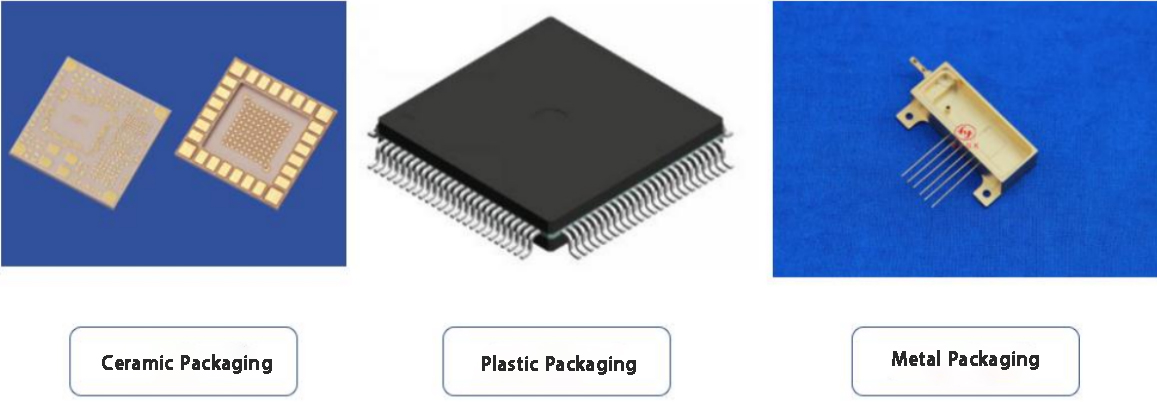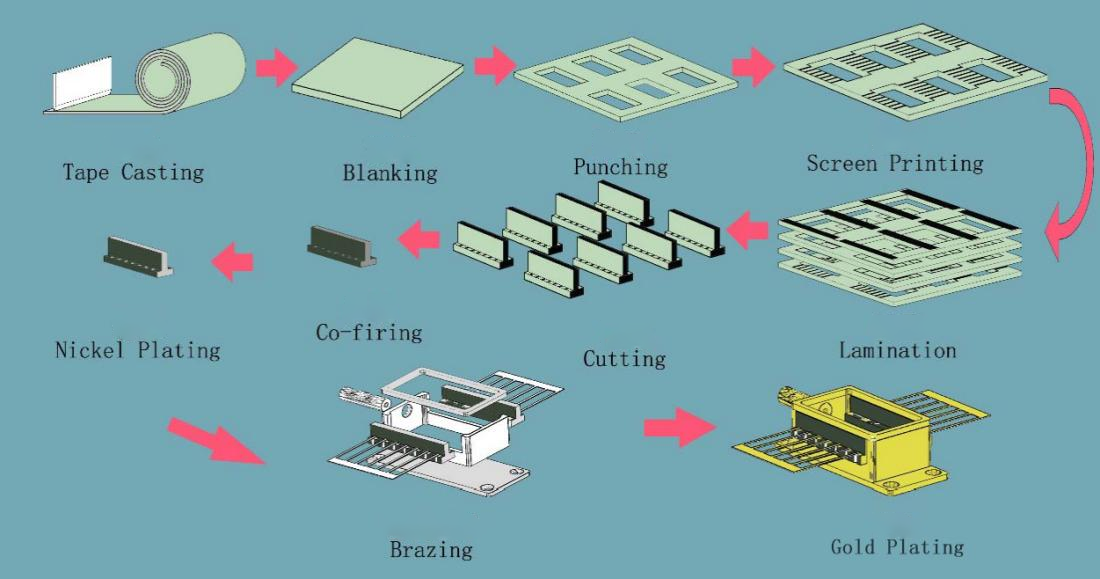High precision thick film printing process for conductive and insulating ceramic sealing components used in electronic components
Ceramic packaging is an electronic packaging technology that uses ceramic materials as the enclosure for electronic devices. It is utilized to protect and seal electronic components while also enabling interconnection with other electronic devices.
For example, Semiconductor packaging is generally divided into four levels: Level 0 Packaging - Circuit design and manufacturing on the wafer;Level 1 Packaging - Interconnection between chips;Level 2 Packaging - Packaging of components onto a circuit board;Level 3 Packaging - Integration of circuit boards onto the mainboard to form the final electronic product. Compared to metal and plastic packaging, ceramic packaging has better mechanical strength, high-temperature stability, insulation performance, and chemical stability. It is widely used in various fields, such as military modules, LiDAR, communication devices, sensors, semiconductors, etc.
Compared to metal and plastic packaging, ceramic packaging has better mechanical strength, high-temperature stability, insulation performance, and chemical stability. It is widely used in various fields, such as military modules, LiDAR, communication devices, sensors, semiconductors, etc.
 Production process of ceramic packaging shellThe ceramic packaging shell is made of ceramic powder, organic binder, and solvent through rolling or casting to produce a certain thickness of raw ceramic sheets. Then, conductive circuits are printed on the raw ceramic sheets, and after printing, multi-layer lamination is carried out, cutting, sintering, and finally brazing metal parts, electrolytic nickel plating, gold plating,and other processes.
Production process of ceramic packaging shellThe ceramic packaging shell is made of ceramic powder, organic binder, and solvent through rolling or casting to produce a certain thickness of raw ceramic sheets. Then, conductive circuits are printed on the raw ceramic sheets, and after printing, multi-layer lamination is carried out, cutting, sintering, and finally brazing metal parts, electrolytic nickel plating, gold plating,and other processes. The production process of ceramic packaging shells is complex with high technical barriers. Especially in the thick film printing process, it is necessary to use high-precision thick film printing machines to ensure uniform printing film thickness and achieve better insulation and thermal conductivity.Details of Thick-Film Printing Process
The production process of ceramic packaging shells is complex with high technical barriers. Especially in the thick film printing process, it is necessary to use high-precision thick film printing machines to ensure uniform printing film thickness and achieve better insulation and thermal conductivity.Details of Thick-Film Printing Process
1.Use a three-axis alignment platform with a CCD automatic centering system.
2.Set the angle of the printing blade between 75-80℃, and use a diamond-shaped rubber blade for scraping.
3. Under the condition of suitable printing blade angle and moderate viscosity of the paste, the interline spacing should be ≤2.5mm.
4.Apply a printing pressure of 1.5KG.Production Workshop




